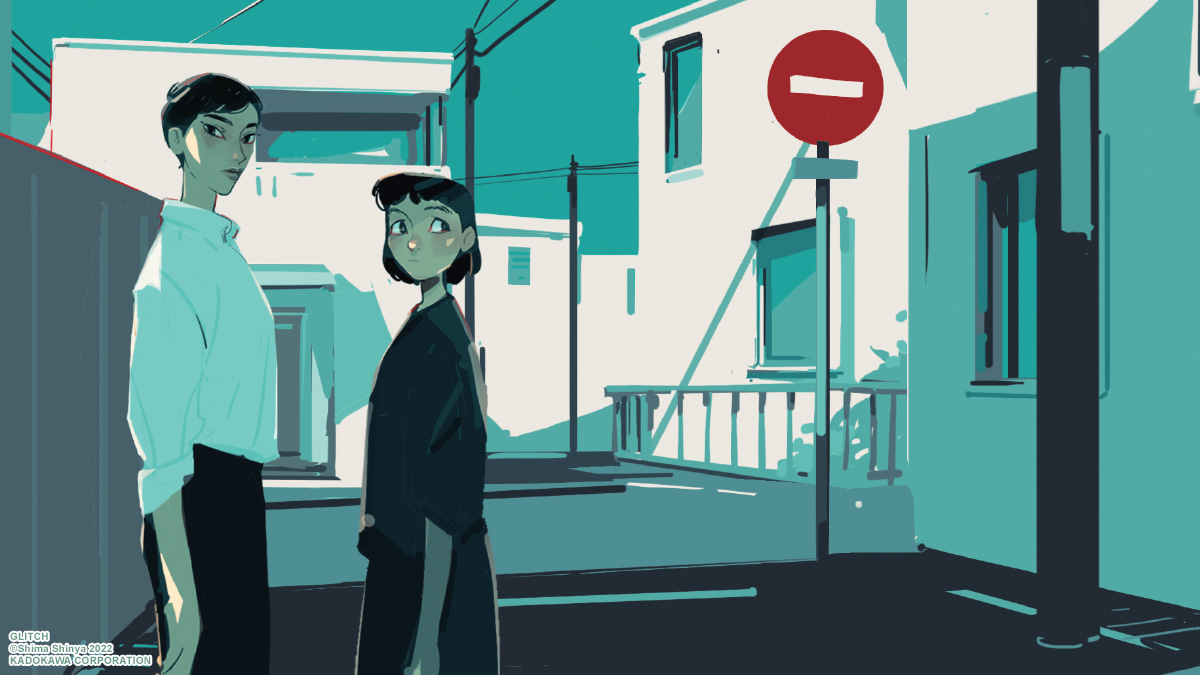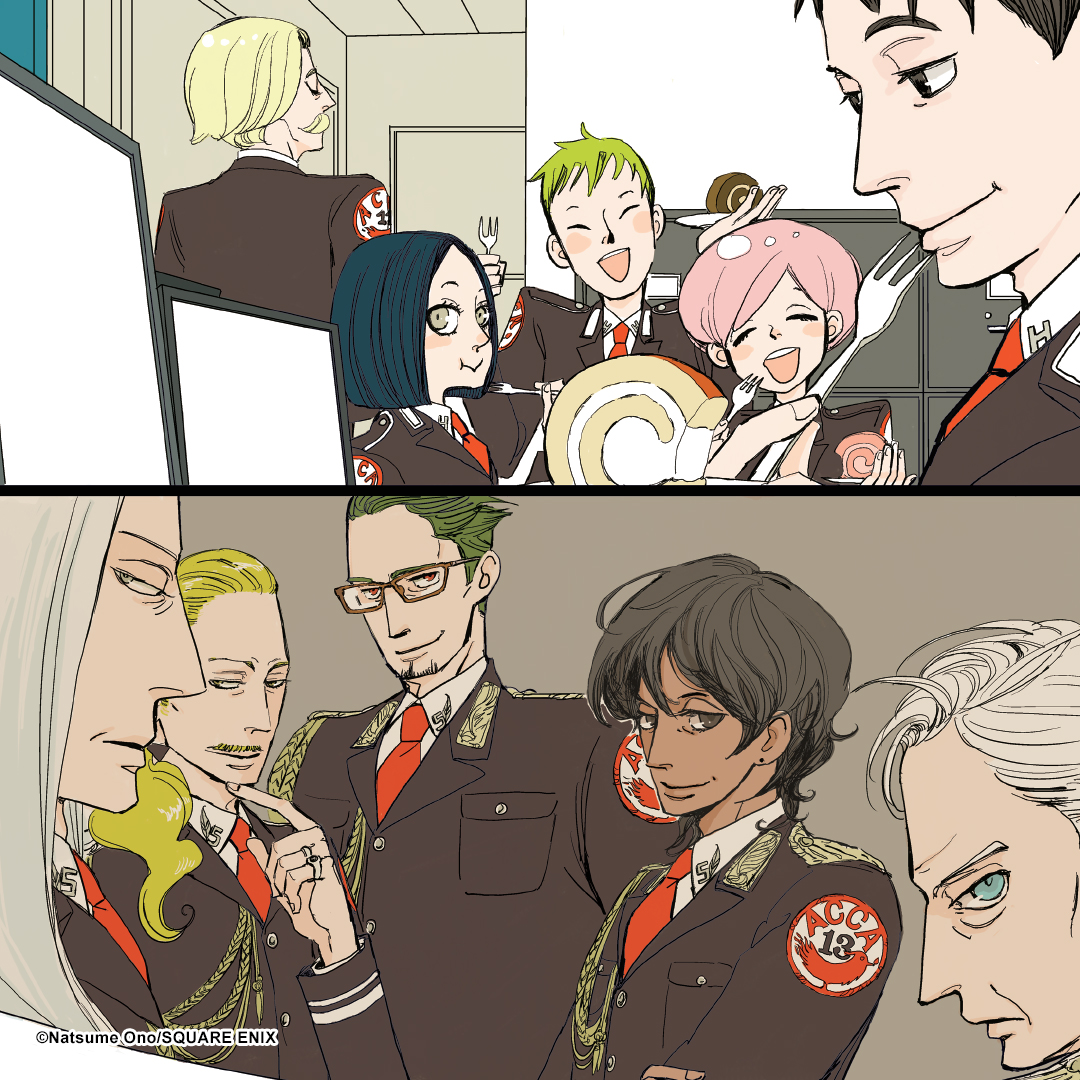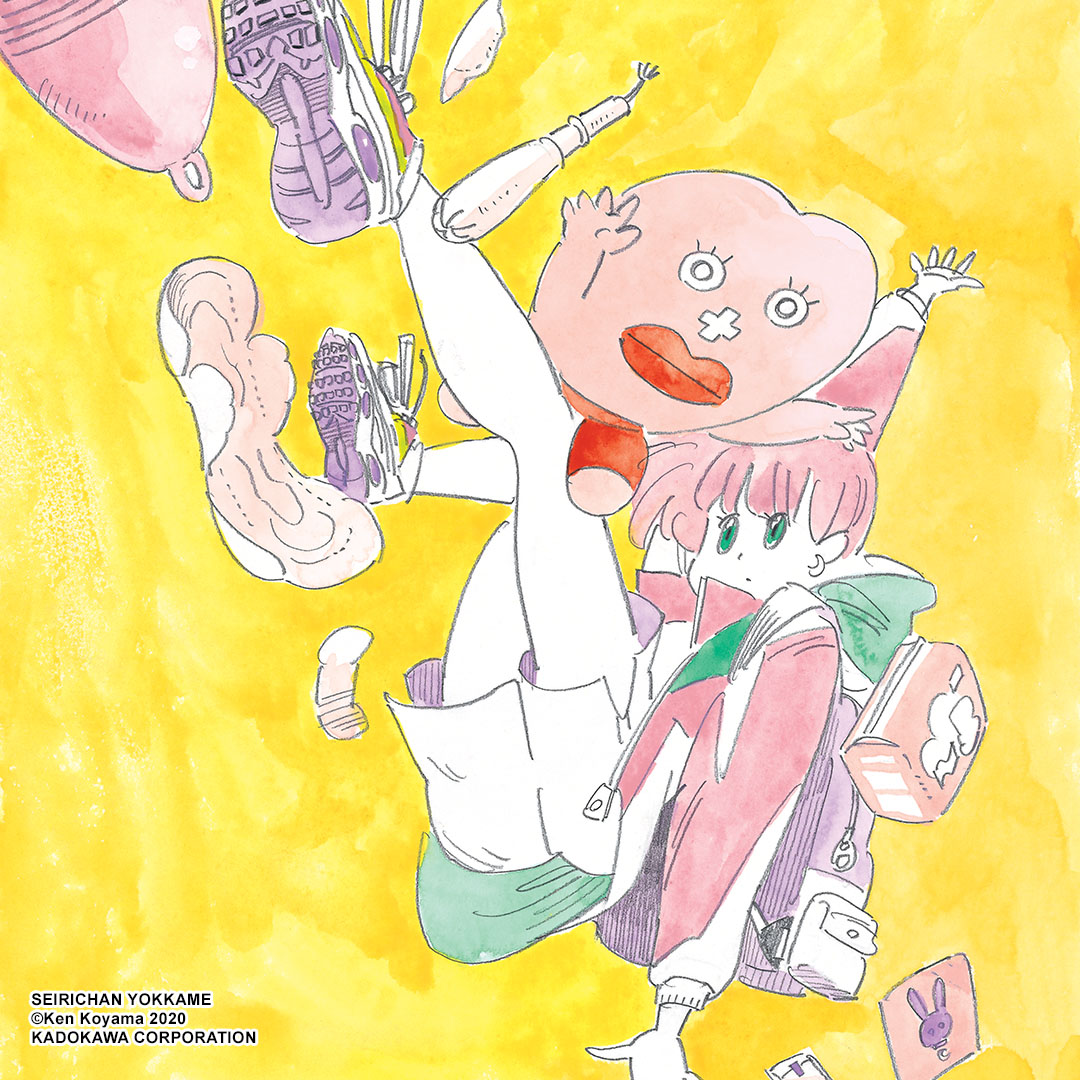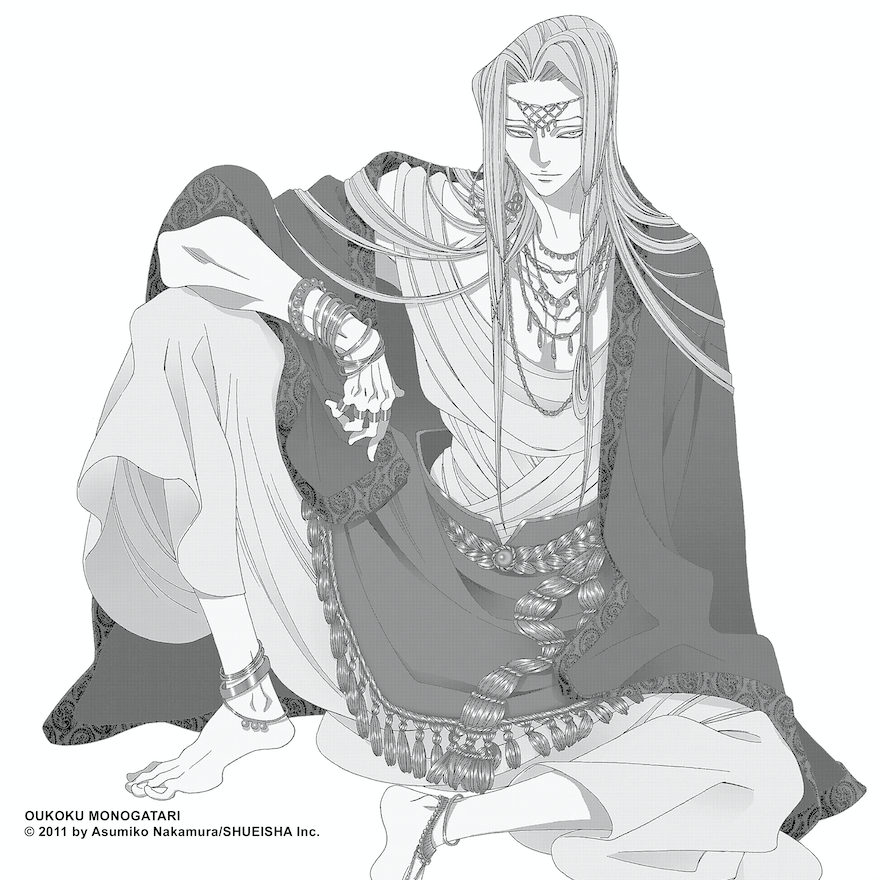Menu

Posted Sep 05, 2023 by Mark Devera
Artist Showcase: Unique Illustrations
After nearly two decades in business, we at Yen Press have published thousands of volumes from more than six hundred series, a quantity impressive for any publisher. With a catalog that vast, we’ve had the pleasure of coming into contact with a wide variety of art styles and illustrations from some of the most creative and talented minds in the world. One of the joys of working at Yen is marveling at these works of art, an act that brings both pride and wonder at the diversity seen on the shelves of our office. So why not share this joy with all of you? Why not show off the brilliant skills and creativity of our artists through some sort of showcase…an artist showcase, if you will? Now there’s an idea… I’ll do just that!
For our first artist showcase, we’d like to honor artists who possess a unique style with manga interiors and cover illustrations unlike any you’ve seen, an idea that was inspired by flipping through the pages of one of our September releases, Glitch by Shima Shinya. Now I can already hear what you think about the concept of our inaugural artist showcase. I can hear your scoffing from my desk as I type. You’re thinking, Unique illustrations? Really…? All artists are unique. Natsuki Takaya is unique. Mokumokuren is unique. so-bin is unique. Everyone is unique! You work for a publishing company, Mark…use more descriptive words, damn you! To you I say, Natsuki Takaya’s art style is cute yet beautiful. To you I say, Mokumokuren’s art is hauntingly grotesque. To you I say, so-bin’s art is goddamn badass. Shima Shinya’s art style has me at a loss for words, or at the very least presents me with a situation in which I will need to use many words to describe their talents. So let me make it easy for you and for me and just say that they possess a unique illustration style. But don’t just take my word for it. See for yourself!
Let’s take a look at Shima Shinya as well as a few other great artists who can demonstrate what unique illustration is.
Shima Shinya
When we prepared to announce our acquisition of Lost Lad London, I was instantly amazed at the cover art for the first volume. Shima Shinya’s artwork was unlike any that I’d seen before, and when I closed in on Al and Detective Ellis on the cover, I realized that Shinya-sensei’s artwork becomes even more impressive the closer you look at it. It would not shock me if one were to tell me that Shinya-sensei has a strong background in traditional art as much as they have a background in manga because, between the unique manner that they draw faces and eyes to the beautiful minimalism seen in the background, their artwork looks as though it would fit in the finest of art galleries.
Shinya-sensei’s compelling artwork doesn’t just end with the cover. Whether you’re reading Lost Lad London or the upcoming release of Glitch, Shinya-sensei showcases equally impressive artistry throughout the pages of their manga, which like their covers, leaves you more impressed the longer you look. Shinya-sensei takes this ability to a new level with Glitch, a story that crosses into the realm of magical realism and allows for the manga art to head into more abstract territory, delivering a reading experience unlike any other.
Natsume Ono
At this point, there have been multiple English-language manga publishers that have released Natsume Ono’s brilliant works. That might be because, if you are someone who prides themselves on tasteful and artistic manga that give a story unlike any other, you’ve got to love Natsume Ono. And let’s face it, manga companies are run by tasteful and artistic people who want something different, often for reasons as personal as they are professional. With many of Natsume Ono’s manga now available in English, fans have been graced with sensual stories based all over the world, such as a slice-of-life romance taking place in an Italian café run by beautiful bespectacled gentlemen or a mysterious samurai tale taking place in Japan’s Edo Period. We at Yen Press had the honor of publishing ACCA 13-Territory Inspection Department, Natsume Ono’s manga taking place in the fictional kingdom of Dowa, a land endowed with beautiful baked goods and equally beautiful men in uniform.
The sensuality of Natsume Ono’s storytelling is complemented by her charmingly unique art style. It is often beautiful and exudes subtle sexuality, but within the pages of her manga, she also shows off her breadth with adorable characters and comedic expressions, constantly combining her characters’ sharp features with her tendency to head into minimalistic territory. Natsume Ono is a barometer of the taste of manga fans. Everyone says that they are looking for quality and for something different. The truth of this sentiment can be measured by the depth of one’s love for Natsume Ono.
Ryotaro Ueda
When I made the decision that I would dedicate this artist showcase to unique illustrations, I dug through our catalog to figure out who should be included. Before then, I had already written down the names of two artists that I knew I wanted to include in this piece. One artist was Shima Shinya, who inspired this article in the first place. The other artist was Ryotaro Ueda, the creator of the standalone title Hana-chan and the Shape of the World.
Looking at the cover of Hana-chan and the Shape of the World, it is instantly clear why Ueda-sensei would be selected as an artist known for unique illustrations. I mean, just look at the way he draws the titular character, Hana-chan. And Hana-chan’s cat? Picasso-sensei, eat your heart out! A story having to do with a young girl’s exploration of a world she’s just beginning to understand provided Ueda-sensei a canvas to enter abstract territory, most notably seen in the first few chapters that include Hana-chan experiencing a storm or hallucinating off toxic fumes from her village’s “secret weapon.” The abstractness of Ueda-sensei’s art style is enough to give him the moniker of a unique illustrator, but this becomes even more the case when combined with its cuteness and sentimentality, with Ueda-sensei’s art being reminiscent of manga classics. Put simply, Ueda-sensei can be described as an over-the-top Osamu Tezuka or Fujiko F. Fujio, and I say that with the utmost respect and compliments. Hana-chan and the Shape of the World is both an absolute wonder and a warm and charming treat.
PS – A few years ago, we at Yen Press helped facilitate an interview between Anime News Network’s Lynzee Loveridge and Ueda-sensei. This was an interview Lynzee herself requested because of how much she loved reading Hana-chan and the Shape of the World. Head here to read their wonderful interview.
Ken Koyama
The further I get into this artist showcase, the more I realize that the creators I am labeling as unique are all the ones who would likely be respected in either the traditional art world or the modern art world. Well, artist Ken Koyama is as modern as it gets. When flipping through the pages of Little Miss P, it was hard for me to find a comparison to Koyama-sensei in the world of manga, at least in terms of manga that’s made its way into English. The only comparative artist I could think of was Rokudenashiko, the creator of What Is Obscenity? Besides her, the only creators who came to mind when looking at Koyama-sensei’s manga were Japanese pop artists, such as Takashi Murakami and Yoshitomo Nara. When you’re talking about a creator whose works would fit as well on the walls of the Museum of Modern Art as they would in between to Liselotte & Witch’s Forest and Little Witch Academia, you know you’re talking about a creator whose work is truly unique.
There is absolutely no way to draw a manga like Little Miss P without having an abstract art style. (For the unacquainted, please learn more by visiting the series page. You’ll never forget…) Between the absurdity of the manga’s concept and the characters within it, an abstract art style such as Koyama-sensei’s is an absolute necessity. You can’t have Mr. Libido, Mr. Virginity, and Little Miss P running around in photorealism! That would turn this bizarre-yet-relatable story from a strange work of slice-of-life into straight up horror (Junji Ito, eat your heart out). Thank goodness we had Ken Koyama to draw this manga for us, one filled with his art that is both quirky and adorable at the same time. Among the many manga we at Yen Press have published, Koyama-sensei’s Little Miss P may be the simplest in illustration, but it is within his simple lines that he demonstrates his ability of expression and his gift to charm readers.
Asumiko Nakamura
Artist Asumiko Nakamura has a few noteworthy similarities to one of our other showcased artists, Natsume Ono. Both are artists that one cannot describe without using the word “beautiful” at least once or twice. They also both have an iconic manner of drawing people, in which their illustrations can be identified immediately at a glance. Last but not least, they both exude sensual sexuality in their manga. In the case of Tales of the Kingdom, Nakamura-sensei’s ongoing series published by Yen Press, the sexuality is dripping…dare I say flooding.
Perhaps the eroticism of Tales of the Kingdom is enough to make a case for Asumiko Nakamura as a unique illustrator. After all, there are few titles in the Yen Press catalog that are nearly as sexual and alluring as Tales of the Kingdom. But even from a pure illustration standpoint, there are few artists like Nakamura-sensei. The narrow seductive look in her character’s eyes, the intricate details on their hands and feet, and the dance-like poses of their beautiful long appendages are all characteristics that make Asumiko Nakamura’s art distinct from anything else one can find on store shelves. These characteristics are also what make her such a recognized, beloved, and iconic name in the world of manga.
I hope you enjoyed this first edition of our artist showcase that spotlights five amazing artists whose illustrations inspire many words, one of which is unique. Be sure to check out Glitch, Vol. 1, the latest of our unique manga releases, available in print and digital on September 19th.












